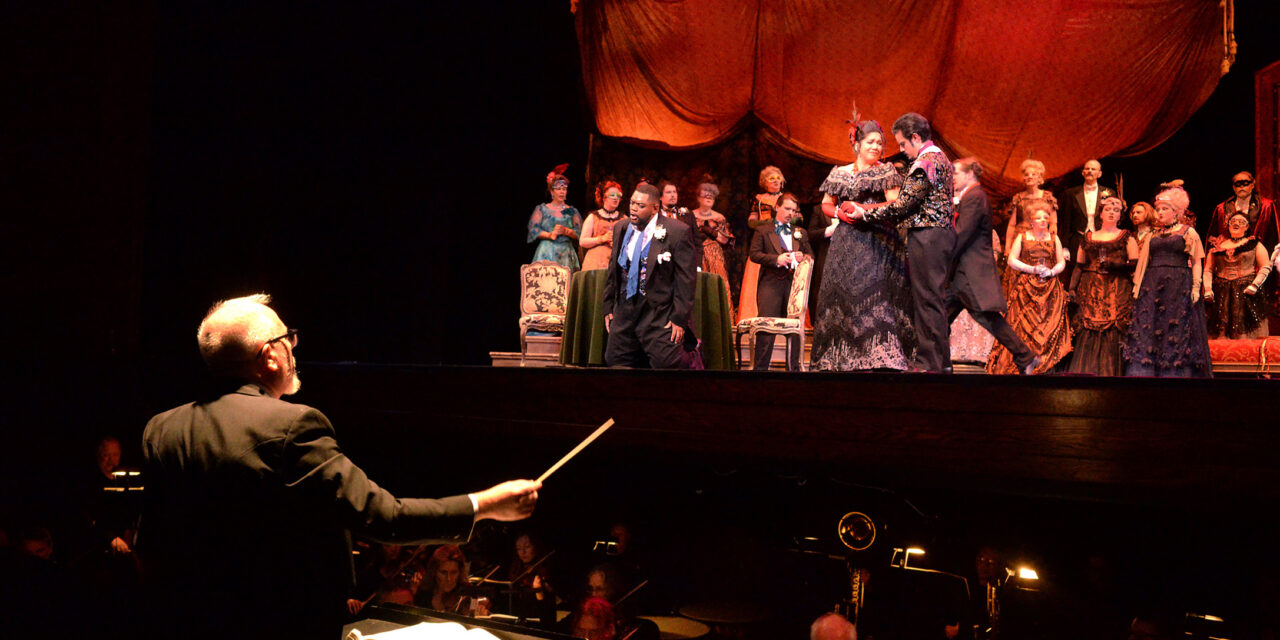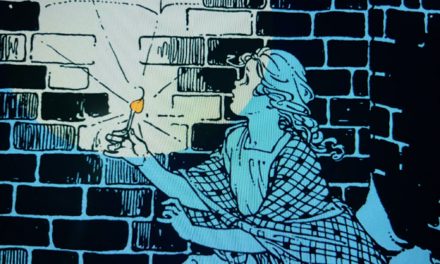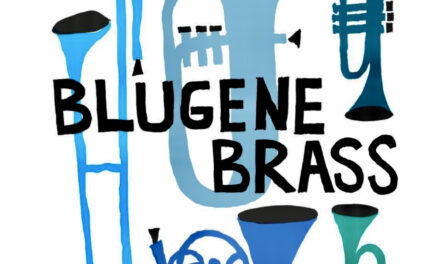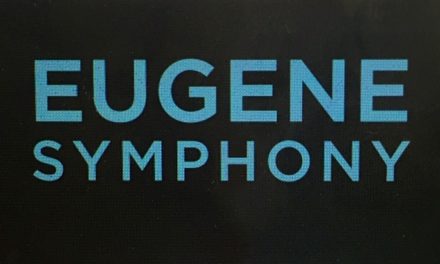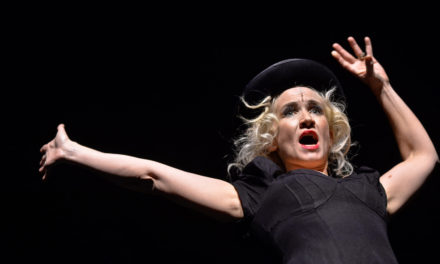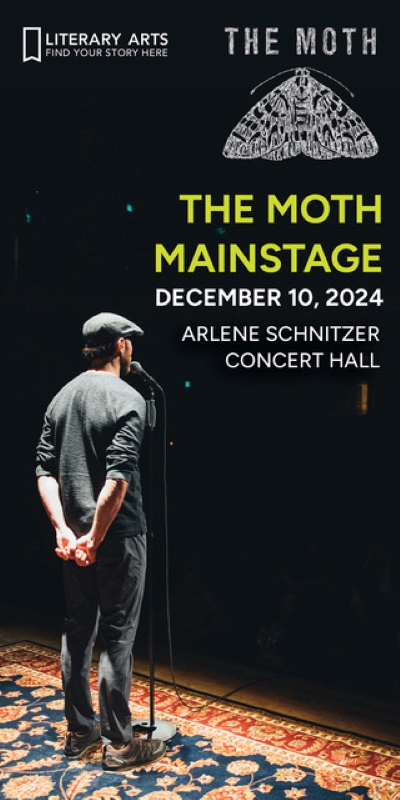(Above: Maestro Andrew Bisantz conducts the orchestra and singers who create La traviata on the Hult Center stage; photo by Paul Carter.
By Daniel Buckwalter
The splendor of it all — a head-to-toe opera production — still resonates.
It’s the costumes, the artistic set designs, the exaggerated gestures as well as the bellowing, athletic voices of the cast, the joy of the chorus that serves as the backbone for the main characters, and the enthusiasm of the audience as individuals race to shout “brava” or “bravo” and give ovations after stunning arias.
I was reminded of this Jan. 26, opening night of Eugene Opera’s wonderful production of La traviata at the Hult Center’s Silva Concert Hall. The performance has a two-production run, and you are able, I would strongly encourage everyone to take in the final performance at 2:30 p.m. on Jan. 28.
You will see the story — music by Giuseppi Verdi, libretto by Francesco Maria Piave — of toxic love, angst, jealousy and sadness. You will hear impressive singing. It’s a treat.
La traviata is the story of Violetta Valéry (Vanessa Isiguen), a party girl extraordinaire in Paris, popular and well off, who floats from one large social setting to the next without a care in the world. “I must be free to dart from joy to joy,” she sings in Act I.
Tomorrow’s not promised to anyone, though. Valéry has tuberculosis, and her situation is growing dire. By the start of Act III, she is alone on her deathbed, joined later by the love of her life, Alfredo Germont (Bernard Holcomb), as well as his father Giorgio Germont (Malcolm MacKenzie) and her trusted aide Annina (Alyse Jamieson).
It is in Act III that the second of two glorious arias (Addio, del passato) is performed. Valéry sings of her regret. “Farewell to the past, with all its smiling dreams… Grant this lost woman one final wish. Forgive her, dear God, and receive her into heaven.”
It’s a powerful performance, and so is the aria sung by Giorgio Germont at the end of Act II, scene 1 (Di Provenza il mar). He has found his son, Alfredo, and wishes to bring him home and reunite the family in a traditional Christian setting, away from the clutches of secular Paris, not understanding Alfredo’s love for Valéry and her sacrifices in the name of love.
Both performances were worthy of the ovations they received.
In the runup to La traviata, Eugene Opera used Central Lutheran Church, which I attend and do part-time “muscle work” for (someone has to move the chairs and tables), as a rehearsal space before moving to the Hult Center.
I got glimpses of Naomi Castro, Eugene Opera’s chorus master, at work with her group, and I was glad to see her and that group receive its own ovation after Act II.
Later, the Parish Hall floor at the church showed brightly with yards of multi-color duct tape criss-crossing in a confusing configuration that only Eugene Opera could understand, but everyone hit their marks on opening night. One evening, when the company was not using that configuration on the floor, two young boys (brothers) used it for an impromptu hockey game.
It was a pleasure to have Eugene Opera at Central Lutheran Church, a pleasure to witness opening night — and, again, I would strongly encourage anyone to see the final Jan. 28 performance of La traviata.

